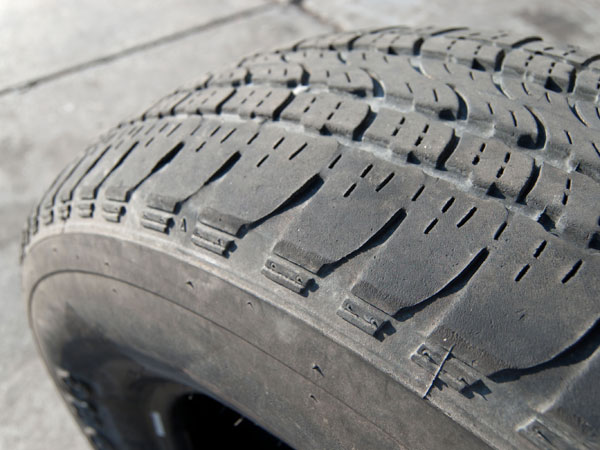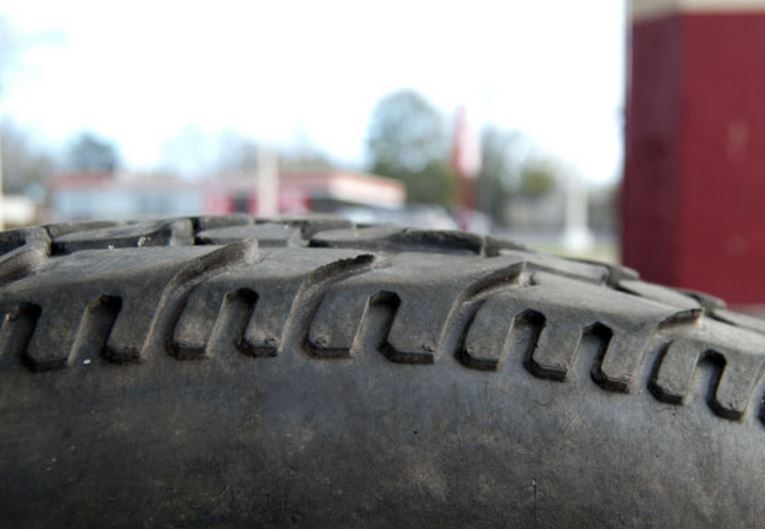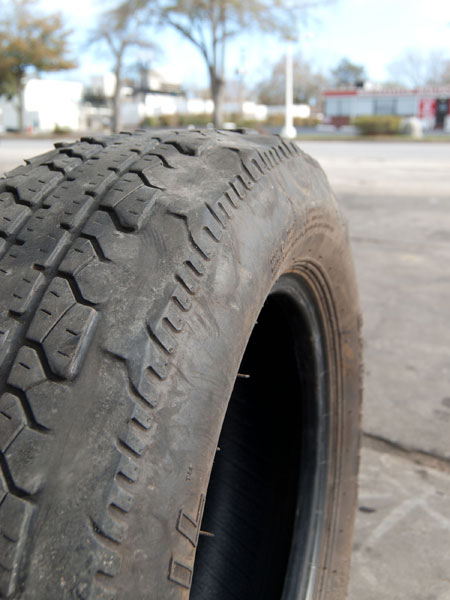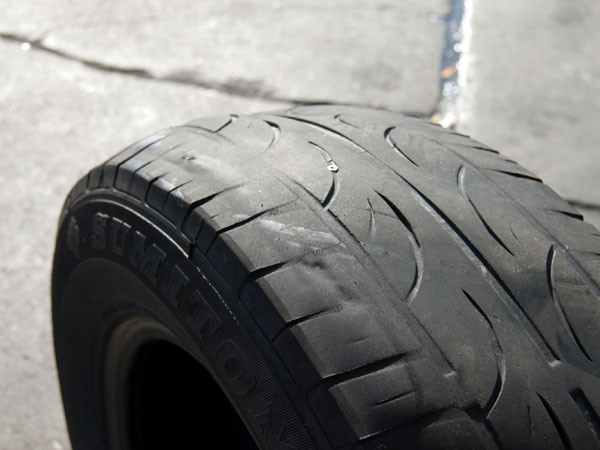Your tires might be telling you something.
Are you listening?
The condition of your tires could warn you of premature wear or be a sign of issues in other areas of your vehicle. You may simply need to add more air pressure to your tires, or you might need to have your suspension system checked and service.
As part of any tire maintenance routine, you should inspect your tires for wear. The treadwear patterns can tell you a lot.
Here are eight common wear patterns and what they mean:
Center Wear
Appearance: Worn tread only down the middle of the tire.
What Your Tires May Be Saying:
“I’m over-inflated!”
If the tread is worn only in the middle, it is an indicator that the tire over-inflated, causing just the center section to bulge. Because the tire then rides mostly on that bulge in the center, the tire wears more quickly in the middle than on the sides. Pay close attention to your tire pressure and make sure tires are inflated to the manufacturer’s specifications.
…
Shoulder Wear
Appearance: The inside and outside edges of your tires are worn, but the center remains in good shape.
What Your Tires May Be Saying:
“Add more air — I’m under-inflated!”
In direct contrast with an over-inflated condition, under-inflated tires experience added pressure at their edges as more of the tire makes contact with the road. This causes the shoulder to wear prematurely. This is considered one of the more dangerous conditions as eventual heat buildup can cause a blowout. Under-inflated tires won’t absorb bumps as well either, so ride quality will suffer.
Again, be sure to monitor your tire pressure with a good tire pressure gauge and adjust accordingly.
…
Feathering
Appearance: Feathered tread blocks are typically shaped like ramps in a sideways direction on the tire. They are rounded on side and have sharp edges on the other.
What Your Tires May Be Saying:
“Check your alignment!”
Incorrect toe setting often causes feathering. Worn or damaged ball joints or suspension bushings may also be the culprit. And sometimes feathering is simply caused by high-speed cornering.
…
Heel-Toe Wear
Appearance: Heel-toe wear is similar to feathering, except the ramps run from front to back. That is, the leading edge of the tread block will be smooth while the trailing edges will be sharp.
What Your Tires May Be Saying:
“Rotate your tires more often!”
Heel-toe condition is often a symptom of infrequent or improper tire rotations. (See our rotation guide here.) Other potential causes could be worn or damaged suspension bushings, ball joints, or wheel bearings.
…
Scalloped Edges
Appearance: A series of alternating hills and valleys
What Your Tires May Be Saying:
“Check your shocks and suspension components!”
Bad suspension parts can cause your vehicle to bounce up and down, causing these unique scalloped-shaped wear patterns on your tires. In some cases, an out-of-balance wheel will cause this appearance, but the scallops tend to be fewer and farther between.
…
Outer-Edge Wear
Appearance: The outside shoulder of the tire is noticeably more worn.
What Your Tires May Be Saying:
“Slow down in the corners!”
Outer edge wear is more rare these days and is often the result of overly aggressive cornering. In this case, your options are A) slow down, or B) invest in a set of performance tires with stiff sidewalls.
Other possible causes of outer-edge wear are too much positive caster/camber and toe.
…
Inner-Edge Wear
Appearance: Tread wear is confined to just the inner edges of your tires.
What Your Tires May Be Saying:
“Check for excessive negative camber or toe-in!”
The angle of the negative camber and toe-in will cause inside wear on tires. In some cases, excessive negative camber and toe-in are caused by worn suspension components or even misaligned wheels.
…
Flat Spots
Appearance: The tire will have a predominately normal tread with a noticeable smooth spot(s).
What Your Tires May Be Saying:
“Check your brakes!”
Flat spots typically occur when the brakes lock up. Although flat spots can occur from an isolated incident, if your tires show this condition you may want to have your brakes checked to ensure they’re functioning properly.









[…] but the ramp runs from front to back, not side to side. Heel-Toe wear is most likely a result of infrequent or neglecting to rotate your tires […]
Nice photos to show the wear.
Helpful article.
typically if motor vehicles are rear wheel drive, the rear tyres will wear more in the centre of the tyre due to this being the only part of the tyre to have contact with the road at highway speeds even if they inflated correctly they will wear this way and has nothing to do with them being over inflated.
front tyres that wear evenly on both shoulders is not caused by under inflation as industry leaders will suggest, this type of wear is created due to the weight being transferred to the front tyres under braking, as 75% of the vehicle braking weight goes to the front tyres, causing the front tyres to distort in shape causing to this type of shoulder wear.
Solution: to better manage your tyre wear its best to rotate fronts to back on the same side and vice versa every 3 to 5 thousand kilometres.
“Check for excessive negative camber or toe-in!”
“…… toe-in will cause inside wear on tires.”
Sorry, but toe-in will cause wear on the outside of the tyre, not the inside.